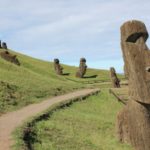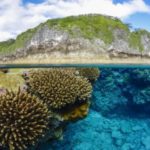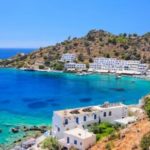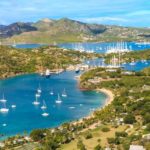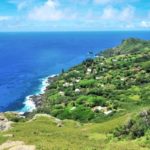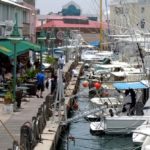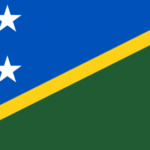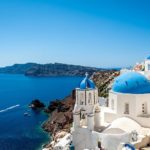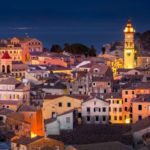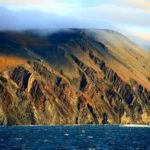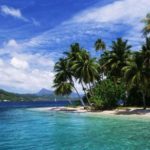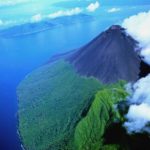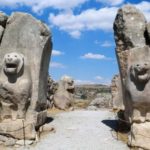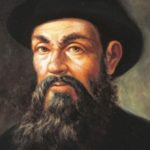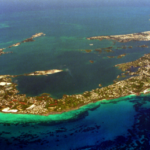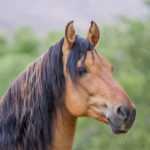Moai – stone idols of Easter Island
 On our Earth there are still many mysteries to be solved. One of these puzzles are stone idols and text messages with hieroglyphic inscriptions on plates from Easter Island. Easter Island of volcanic origin, which is located in the eastern Pacific Ocean. Previously, the island bore the name Rapa Nui, which translated from Polynesian means Big Rock.
On our Earth there are still many mysteries to be solved. One of these puzzles are stone idols and text messages with hieroglyphic inscriptions on plates from Easter Island. Easter Island of volcanic origin, which is located in the eastern Pacific Ocean. Previously, the island bore the name Rapa Nui, which translated from Polynesian means Big Rock.
It belongs to this island of Chile. Currently there are approximately two thousand inhabitants. Residents themselves call themselves Rapanuyets. They are descendants of a great civilization who could not keep their knowledge. When the sailors from Holland sailed to the island in 1722, they renamed it Easter Island. There are no tall trees on the island that can explain how tall and heavy idol figures hit the shore. It has already been proven that the figures themselves were carved on the quarries. Each figure weighs more than 80 tons and reaches a height of 10 meters, and some even have an increase to 20 meters. Without any mechanical devices, these stone figures were moved tens of kilometers and installed on the ocean.
The heads of all the idols had “hats” – pukao, which were also carved from the red rock. The weight of each hat reached five tons.
These carved sculptures stand on pedestals. Pedestals also inspire respect for their size. After all, the weight of the pedestal can reach hundreds of tons and have a length of up to 150 meters. On the shore there used to be about two hundred figures. Seven hundred was found on the road from the quarry to the ocean. At the quarries themselves found about 200 sculptures still unfinished.
Who needed to make so many stone sculptures and set them on the ocean? Even our modern gadgets would hardly have done the job of carrying all these weights. Statues were made and installed in the years 1200-1500. Then everything stopped abruptly. Archaeological finds claim that from 7 to 20 thousand people lived on the island. This does not seem likely. How could such a population feed themselves on an island of 165.5 km 2. Although there were grown crops and people engaged in fishing. Even skeletons of dolphins were found.
Scientists say that in the 4th century AD, islanders could sail in boats and build large fortifications. At that time, forests and a special kind of palm trees grew on the island. Palm trees were up to 25 meters in height and in the girth of 180 centimeters. These palm trees could help in dragging heavy stone idols and for gouging boats for fishing. But then the big palm trees, the forest and the dolphins disappeared. The number of people on the island also began to decline. The history and culture of a great nation began to be forgotten. But it is possible that these huge figures were moved and installed like this.
Now no one can read what is written on the tablets, which are also found on the island. They learned only what they wrote on them from left to right. This is proved by the fact that the right end of the written characters ends differently, and on the left side all the characters are located on the same level. Now scientists are trying on 20 tablets to find out what is written on them. There are only 11 texts. Some boards copy each other. The inhabitants of the island are now talking in a different dialect, and there is no way to know what the ancient tribes wanted to convey with their texts. The boards are called kohau.
Hieroglyphs with figures of frogs, stars, spirals, turtles, lizards, winged man are carved on the shiny surface of the toromiro tree. Until 1864, tablets with texts were kept in all the houses on the island. A total of 14 thousand hieroglyphs were found on the plates. The number of images on them is different everywhere, from 2 to 2300. A calendar is supposedly cut out on one plate. But guessing yet completely failed. For one hundred and thirty years, everyone who wants to try to guess the hieroglyphs and read the writing. We hope that soon the secrets of the ancient Rapanuyans will begin to open their written instructions, and we will enrich ourselves with the knowledge that we have lost.
In Santiago at the Museum of Natural History lies the Santiag baton, which used to be the leader of Easter Island until 1870. There are also hieroglyphs and badges on the rod. The wand is like a wooden scepter with carved 2300 characters, 6.5 cm thick and 126 centimeters long.
All text on the rod is divided by vertical lines into unequal sections. On the right side there is a phallus-shaped sign, which is called a suffix. There is an assumption that it is written on the scepter about the creation of the world with the male and female beginnings. The triad construction of the text is similar to cosmogony, the song about the creation of the world “Atua Mata Riri”, which was recorded in 1886 by the American soldiers at Ure Va’e Iko.
Currently, the islanders are engaged in fishing, farming, livestock. Travel agencies take a lot of tourists for whom the locals began to make souvenirs. Many earn that entertain tourists.
